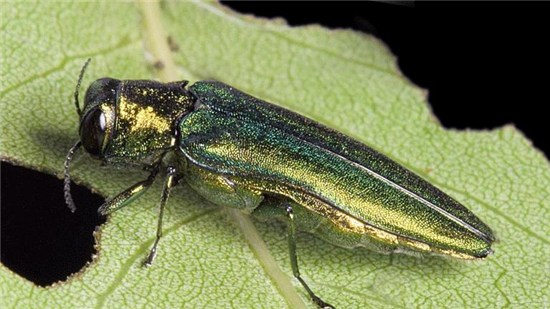 The Town of Wake Forest is urging area landowners with ash trees on their property to be on the lookout for signs of emerald ash borer (EAB) infestation.
The Town of Wake Forest is urging area landowners with ash trees on their property to be on the lookout for signs of emerald ash borer (EAB) infestation.
The North Carolina Department of Agriculture & Consumer Services announced recently that Wake and Franklin counties have been added to the list of counties under an emerald ash borer (EAB) quarantine after ash borers were confirmed in both counties. Quarantine rules restrict the movement of hardwood firewood, ash nursery stock and other ash materials.
The insect has also been detected in nearby Granville, Vance and Person Counties resulting in an EAB quarantine in these areas.
The emerald ash borer is responsible for the death of millions of ash trees across the country. First detected in Michigan, the pest has spread to North Carolina threatening all species of ash including white, green, black, blue, Carolina and pumpkin. The half-inch-long insect kills ash trees of all sizes whether they are healthy or weak.
Humans have unwittingly spread the pest to other regions by moving firewood that contains EAB larvae. Eggs are laid beneath the bark and larvae are hard to detect.
Through a "Don't Move Firewood" campaign, forestry experts remind citizens that it is best to buy firewood locally and use it within a 10-mile radius of where it was purchased. Campers are also urged to burn all wood before leaving their campsite to ensure that no emerald ash borers are left at the site.
Homeowners that need help determining whether a tree on their property is an ash may visit www.emeraldashborer.info. The website provides complete information about the EAB infestation and how to tell if your tree is infected.
According to the N.C. Cooperative Extension Service, signs and symptoms of EAB include D-shaped exit holes, meandering galleries, dieback and thinning crowns, epicormic sprouting, vertical bark splitting and increased woodpecker activity. To view examples of these signs, visit http://na.fs.fed.us/spfo/pubs/pest_al/eab/eab.pdf.
The Town of Wake Forest has 87 ash trees on public rights of way. However, the larger concern for the town's tree population is the large number of ash trees located on private property, in open spaces within neighborhoods and forested areas. Wake Forest Urban Forestry Coordinator Jennifer Rall will be working with representatives from the North Carolina Department of Agriculture & Consumer Services and the N.C. Forest Service to develop an action plan to address the monitoring, treatment, removal and replacement of ash trees over the next 10 years.
For more information, contact Luke Devores at 919-435-9565.

